Best triathlon suits 2025: race-ready tri suits for every distance
We test and review six of the best triathlon suits on the market across all three disciplines.

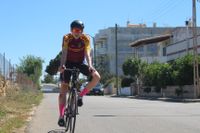
Adding one of the best triathlon suits to your arsenal of kit can be a great way to improve your performance, speed up transitions, and generally feel more comfortable across all three disciplines.
Very much akin to the best skinsuits for road cycling, aerodynamics is at the core of all the best tri suits, with the only real difference between them being the volume of chamois. Tri suits will tend to feature a much thinner pad to provide better flexibility during the run and swim portions of a triathlon, versus the best cycling shorts, which focus heavily on comfort for long periods in the saddle. Triathletes are also not constrained by the UCI rulebook, meaning many outlawed features make an appearance on these suits.
In this guide, you will find six of the best-sleeved triathlon suits we have tested extensively across all three disciplines, with the best overall crown going to the Endura QDC D2Z suit. The QDC strikes a perfect balance between aerodynamics and comfort, offering excellent performance across all disciplines.
If you're just getting started in triathlons, nothing is stopping you from using normal cycling kit. However, investing in one of the best cycling jerseys or in one of the best road bike helmets for improved aerodynamics and performance might be worth considering.
The Quick List
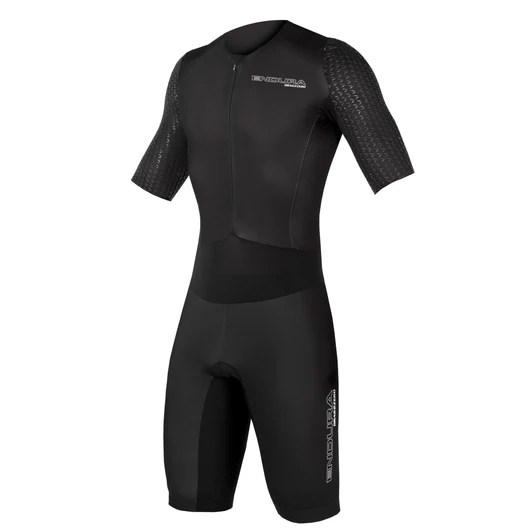
Comfortable yet aerodynamic, this suit performs admirably across all three disciplines...but it is expensive.
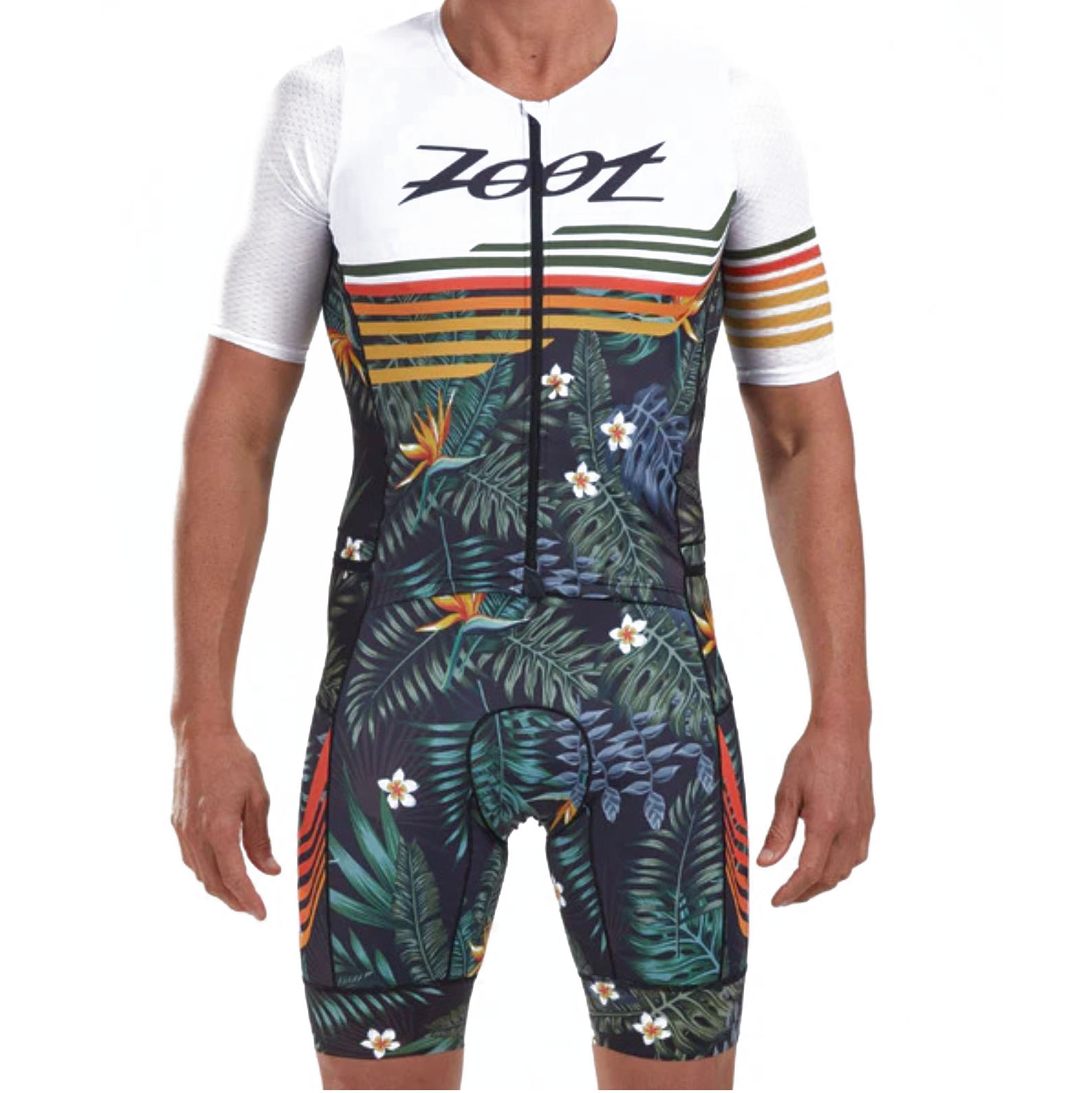
Superb fit, breathable and with a quality pad, it was the comfiest suit on test.
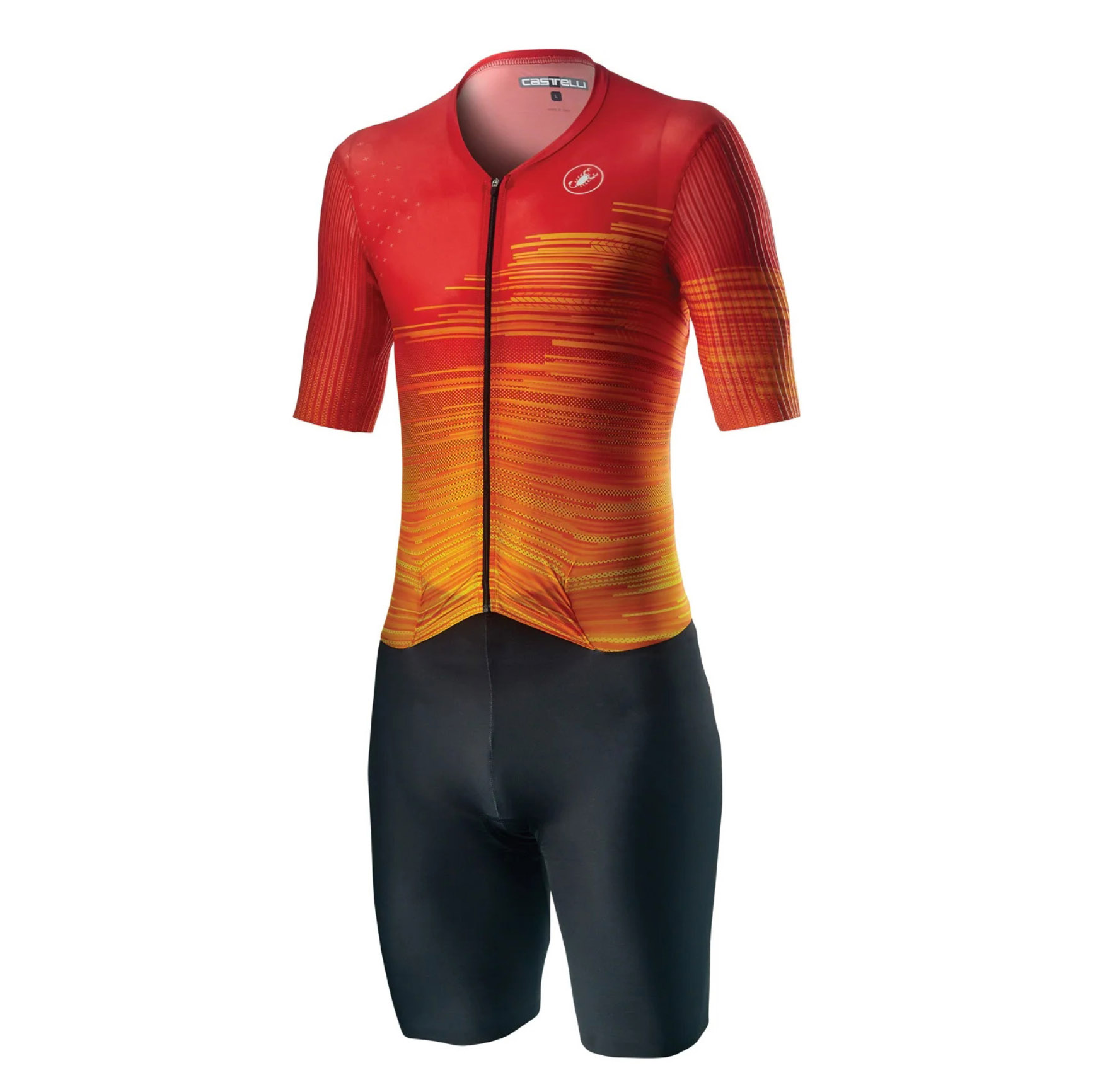
Fast and light and with a quality chamois, the PR Speed is well-suited to long-course triathlons.
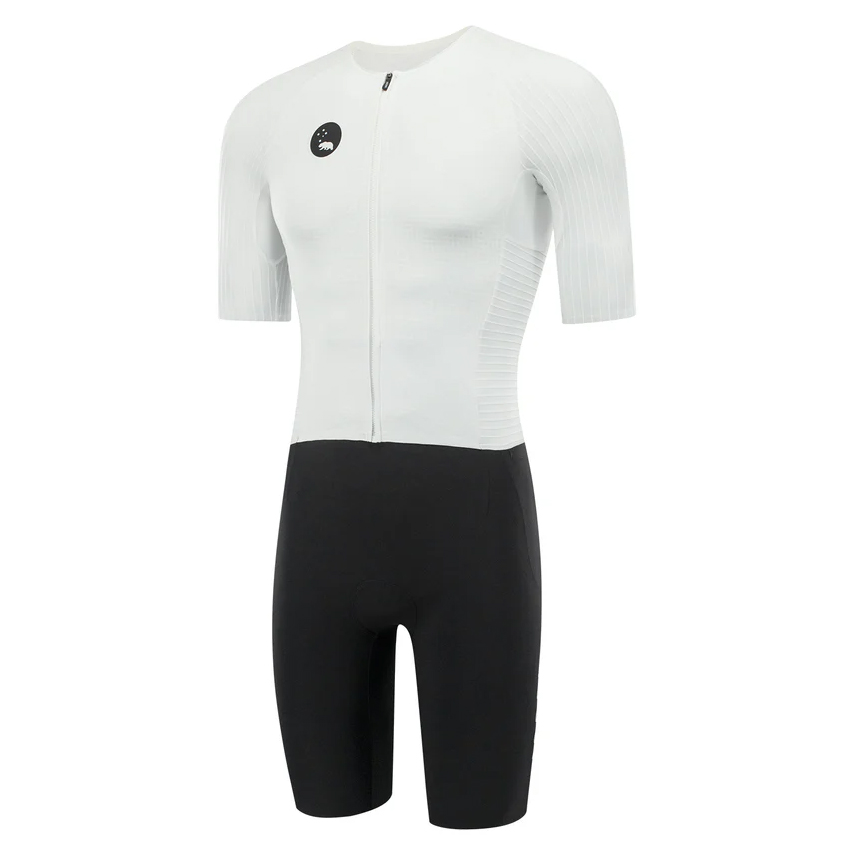
A 'second skin' feel that will guarantee improved performance for true enthusiasts. However, this comes at a cost.
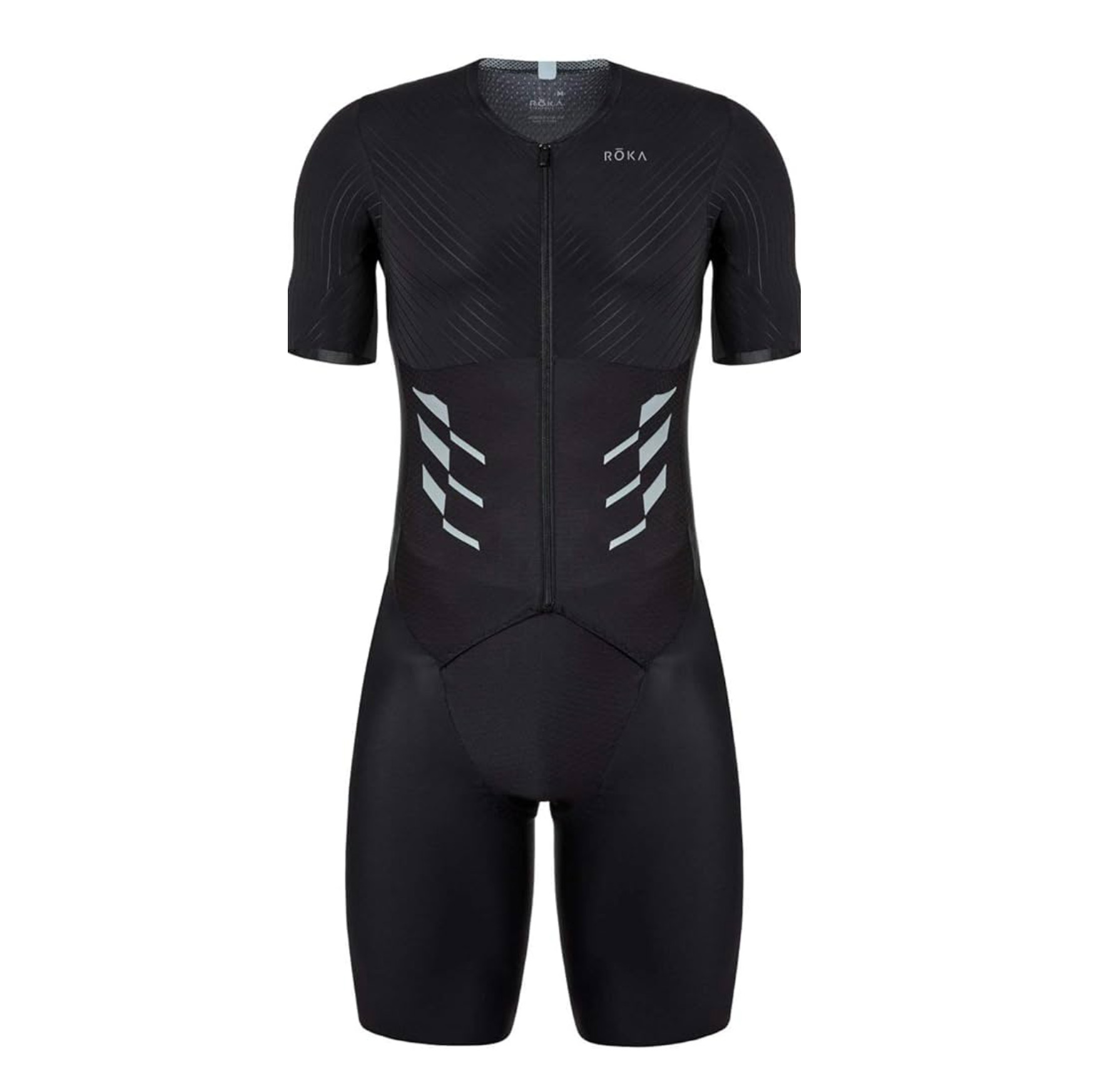
Not all triathlons take place in Hawaii! A robust suit that can handle the cold and do so in comfort.
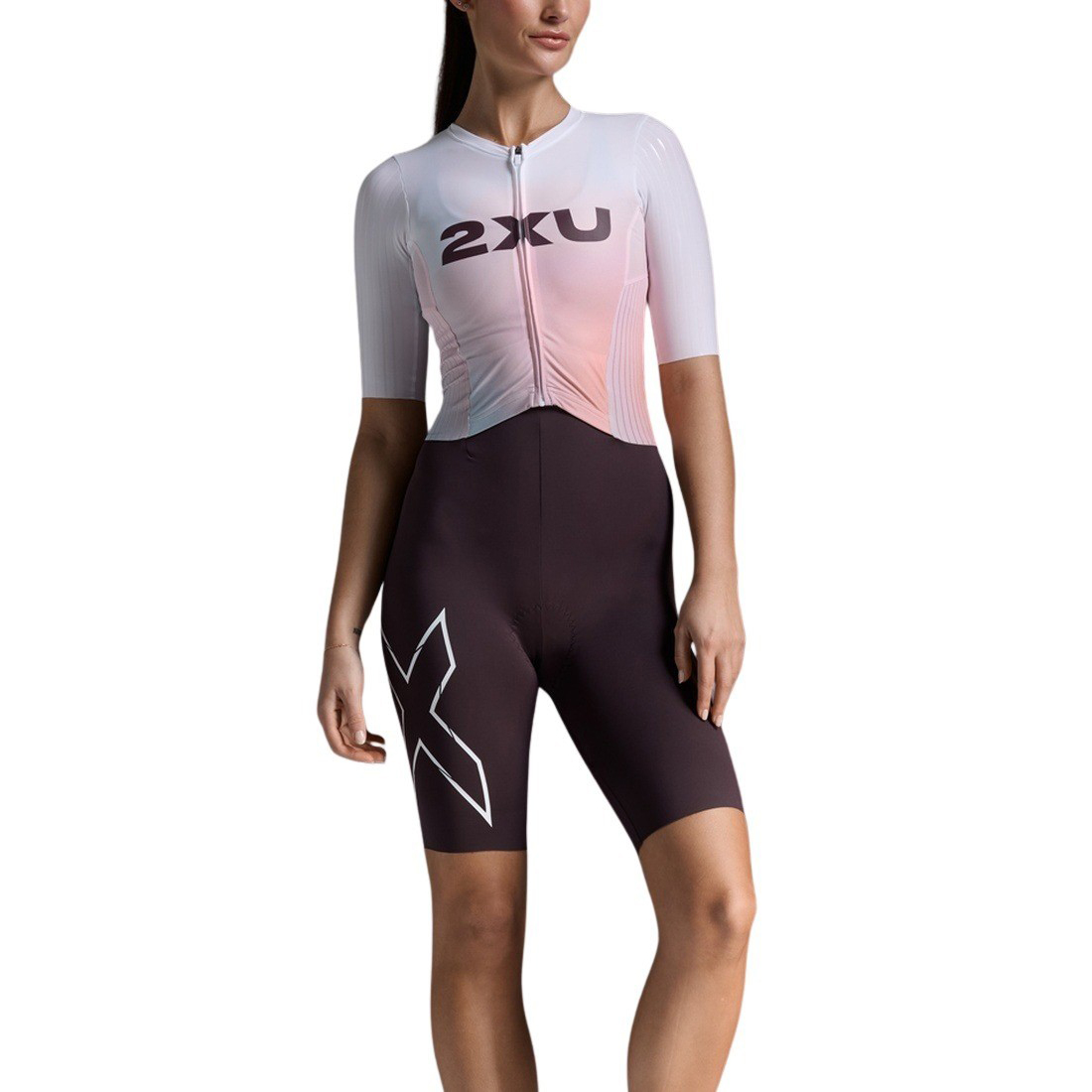
The Aussie brand has nailed the aesthetics and matched it with the performance that is more suited to shorter athletes.
Best triathlon suits 2025
Best overall

1. Endura QDC D2Z S/S Tri Suit II with SST
Our expert review:
Specifications
Reasons to buy
Reasons to avoid
Endura’s famous collaboration with D2Z resulted in the Encapsulator TT suit that was so fast the UCI changed their rules because of it.
But the QDC D2Z S/S Tri Suit II with SST could be the more impressive piece of kit, especially considering the additional demands that are placed on a tri suit. First, comfort is more important (running chafing is worse than any bicycle chafing - sorry cyclists) plus making a suit that’s aero but can be run in is also hard—you can’t run fast folded over.
This suit was incredible resulting in only a small amount of chafing during a rainy half ironman. When you order an Endura QDC D2Z S/S Tri Suit II with SST it comes in a beautiful zip box, has a nice little laundry bag with it and comes with a book which explains the design process.
We washed this suit inside the laundry bag three times. Similar to the Castelli suit, the bag is there in order to protect the air-tripping chevrons on the sleeve,
Best value

2. Zoot Ltd Tri Aero Fz Racesuit
Our expert review:
Specifications
Reasons to buy
Reasons to avoid
The Zoot Waikoloa is definitely an eye-catcher and was interesting to test...
The pad was comfortable on the turbo for two hours. The suit lacked the aero credentials of some of the others, with no texturing on the arms, but was by far and away the most comfortable on the list. Its fit was true to size and is the perfect iron-distance suit.
With a slightly heavier duty feel and thicker pad, we were expecting some chafing or discomfort while running but the suit felt great. Overheating was also a concern but the entire suit is made of a mesh-like material which dissipates heat remarkably well with only a little bit of airflow necessary. Swimming both zipped up, unzipped and pulled down to the waist under the wetsuit were all ok.
If you’re prioritising comfort, the Zoot suit is the best of the bunch (by some considerable margin).
Best lightweight suit

3. Castelli PR Speed
Our expert review:
Specifications
Reasons to buy
Reasons to avoid
The Castelli is definitely designed for athletes at the pointy end, with the air-tripping arm sleeves and aggressive fit...
We tested a medium and it was a pretty snug fit on our tester. It was more aero but less comfortable for running and featured medium sized pockets in the rear and air—tripping (UCI illegal—not that it matters for triathlon) rubber features on the arms.
However, the chamois was relatively generous for such an aggressive suit and, as the fit was so exact, stayed in place during all rides.
If you’re racing a long course triathlon this is a good option. The suit survived a couple of washes quite well. We'd recommend wearing this suit unzipped for cycling then zipped up for the swim. That’s not uncommon for sleeved suits but if you’re not comfortable doing that then it’s not the suit for you.
Best aerodynamics
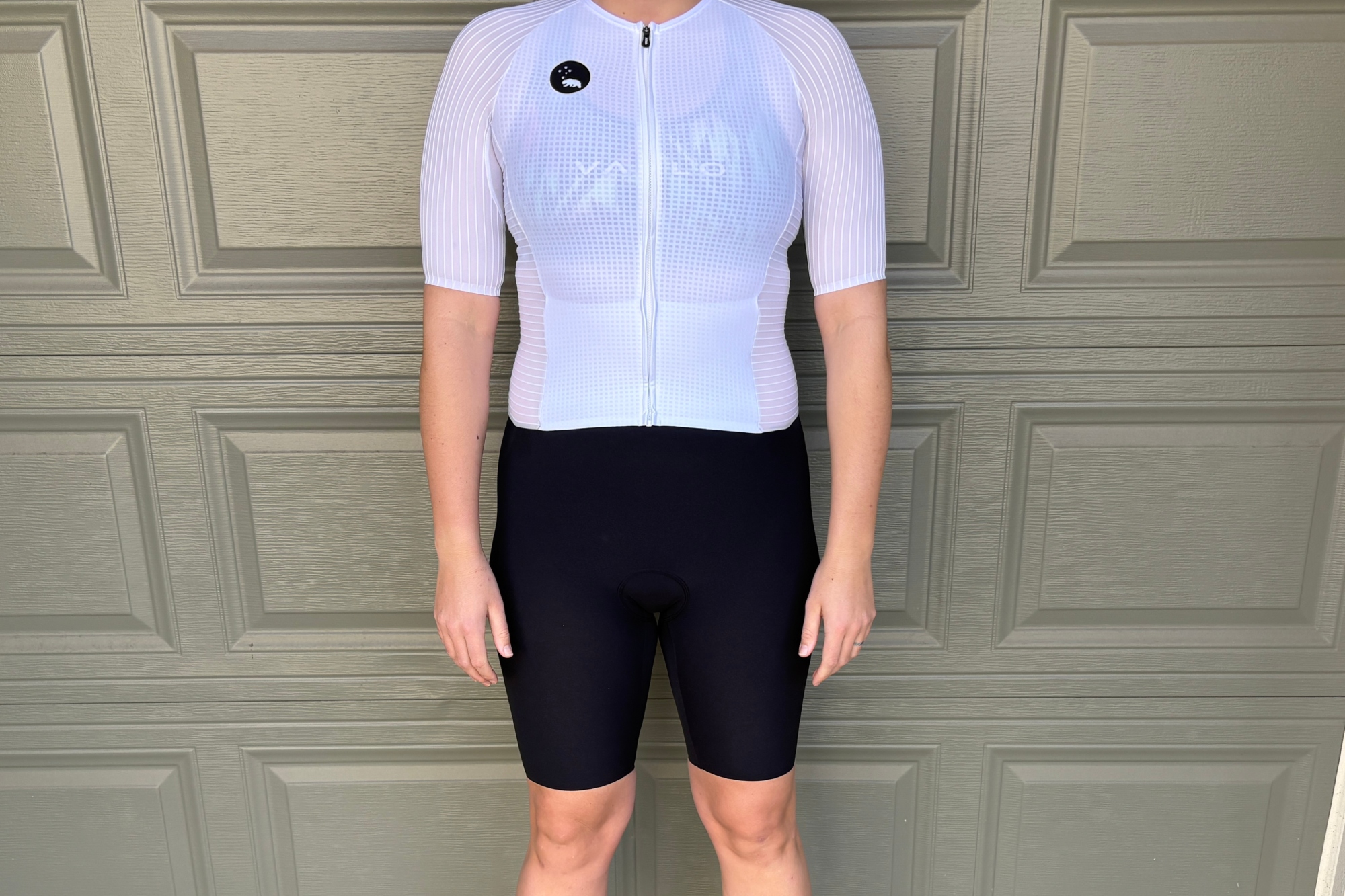
Specifications
Reasons to buy
Reasons to avoid
Early Spring in Colorado is not the best time to test ultra-cooling fabrics, given that it is already pretty brisk outside, which restricts my usage indoors. However, this did allow me to crank up the heat, turn off the fans and really put Wyn's cooling claims to the test on my turbo trainer.
Besides being slightly lengthy shorts and bunching around the groin, which is ultimately why the CdA doesn't receive a full five stars. The feather-light fabric feels like a second skin, and even with the thinner tri-style chamois pad, I was unbelievably comfortable, able to get my head down and focus on my efforts. It was so breathable even as the sweat dripped down my back and legs; I was impressed by how quickly the fabric dried.
And really, what should I expect from a garment that is as expensive as the CdA?
Its performance is second to none, and if Wyn's claims on aerodynamics are to be believed, many athletes will want one of these. With a seven-minute saving over an Ironman distance, thats a considerable saving in time regardless of the cost.
Ultimately, this is a true enthusiast's suit; however, for those who are looking for a PB or to step up to a more competitive level, the gains are there for the taking.
- Read our full Wyn Republic CdA triathlon kit review
Best for cooler weather
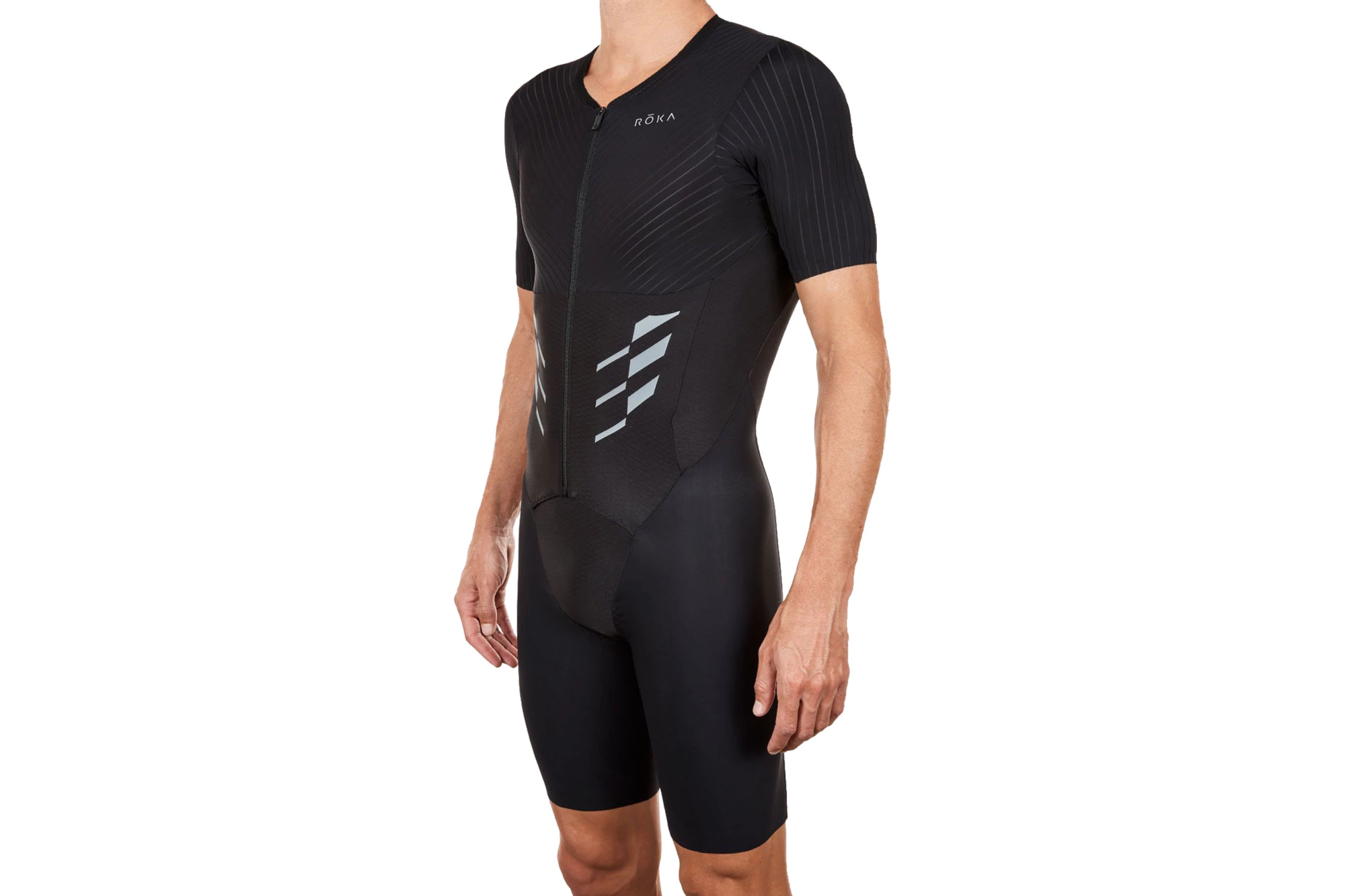
5. Roka Gen 2 Elite Aero Trisuit
Our expert review:
Specifications
Reasons to buy
Reasons to avoid
Roka came into triathlon declaring their intention to build the fastest triathlon wetsuit—and they achieved that by simply putting one on Lucy Charles-Barclay. This is a brand, like Huub, with great pedigree in the sport, which gave us high expectations for the tri-suit.
That said, I found the shoulders to be restrictive and the zip to be uncomfortable in the water. The pad was good, plus the suit has some aerodynamic texturing on the arms. However, it feels heavier than others and certainly more so than some of my road cycling jerseys with similar technology. The chamois was ok on the turbo, but the suit was very hot. A race kit that you'll have to unzip for the swim, which might be more suited for colder races.
Out of the box, it feels high-quality, and the material is pleasant to the touch. You can’t feel the seams when the suit is on, and despite some heat-related issues, there’s no chafing at all while running. This is a good halfway option between comfort and performance unless you’re racing in southern Europe frequently in the summer, when you’ll want to opt for something lighter. However, I used the suit for Ironman 70.3 Swansea, which is generally a fair bit cooler, and it served me well despite losing some gels on the bike.
Best for women
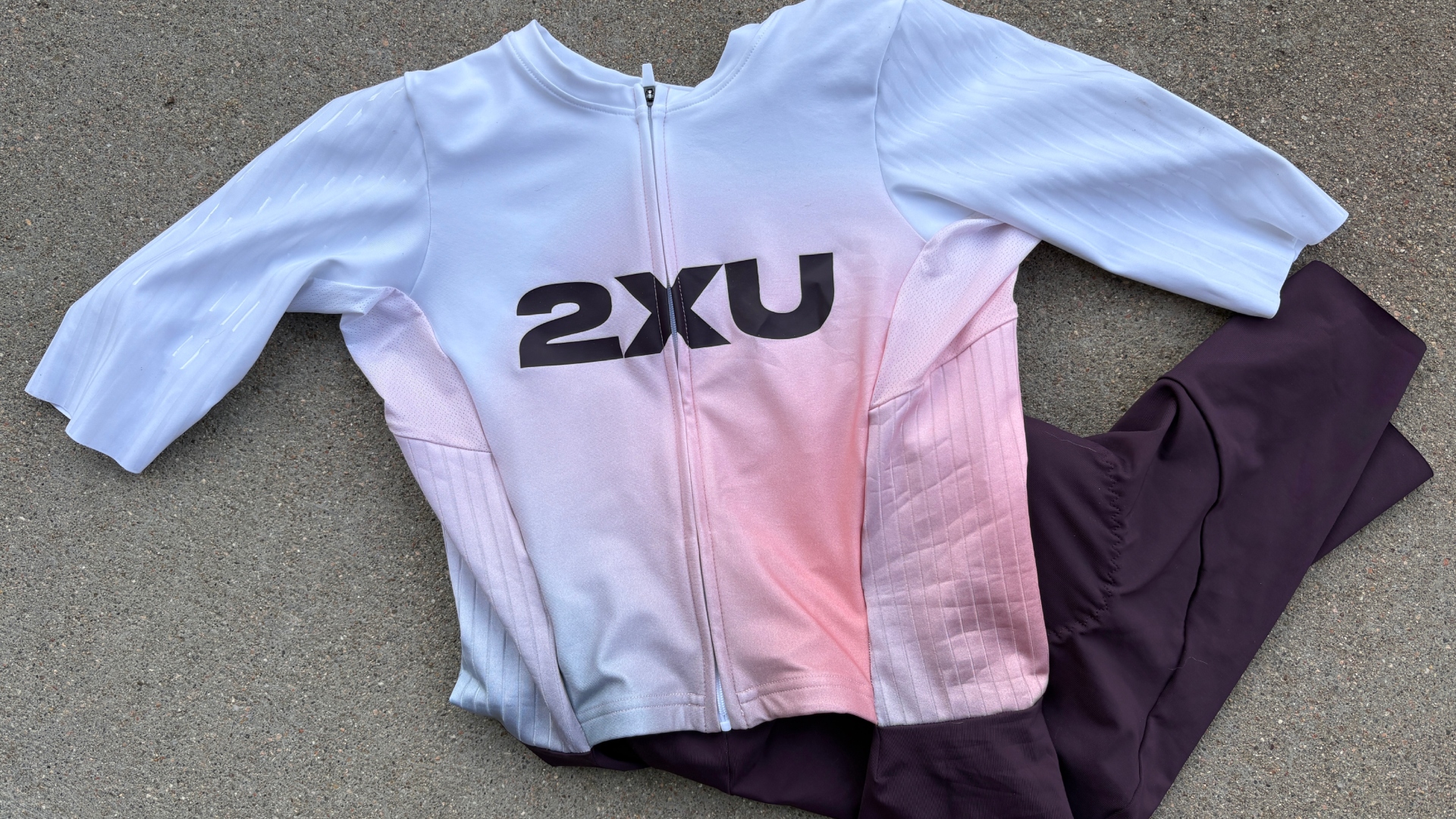
6. 2XU Light Speed React Tri Suit
Our expert review:
Specifications
Reasons to buy
Reasons to avoid
Australian brand 2XU takes a slightly different approach to performance garments. While, of course, aerodynamics are essential, and 2XU's new Light Speed React tri suit is no different, claiming a 17-watt power saving at 50 km/h, which translates to a 3-minute over an Ironman distance bike ride of 180km. 2xu places heavy emphasis on compression, citing it as offering significantly improved all-around body performance, enhanced blood flow, reduced swelling, and overall faster recovery.
Let's get to the ride. I was pleased with how flexible the back and shoulders of the kit were while on my aero bars. However, the kit quickly bunched up around my groin, which was a gripe I had with the WYN Republic CdA kit as well. Unlike the CdA, the 2XU kit, however, started to give me some trouble with chafing as the extra material moved around freely.
I am tall and have reasonably broad shoulders, so I generally need a size large from 2XU, but my hips and legs seem to fit best in a medium on this particular model. This left me with the conundrum of choosing a medium and feeling restricted or wearing a large and contending with extra fabric. In this case, I just got it wrong. This does leave me to believe the Light Speed React Suit would be better suited to a more slender build, though.
That said, the kit performed well during my indoor efforts, and it is aesthetically very pleasing. Given the fit issues and this meaning, I didn't get to test the compression that 2XU offers; I'd be inclined to look at 2XU's other less advanced offerings for savings. If the fit works for you, though, it is a solid temperature-regulating kit with a lot of research and development behind it
- Read our full 2XU Light Speed React tri-suit review
How we test
As we are mostly cyclists here at Cycling Weekly, our focus when it comes to the best tri-suits is focused on this part of the trifecta of events. While some of us are runners and dabble in swimming, we are by no way qualified or experienced enough to comment on these areas.
That is why a lot of our testing is done by Cycling Weekly contributors like Kristen Jenny and Tom Epton. Both have been elite-level Triathletes and know what makes a tri-suit good or bad, for that matter.
Each of these suits was worn for at least one triathlon or long 'brick' session (a bike-to-run session for those unfamiliar with the jargon), as well as for regular training. This is because it is unfair to expect our contributors to use unfamiliar kits during their races; however, if they feel comfortable with it, they will offer a more complete overview of the garments.
Suits are judged on their fit, chamois comfort and heat dissipation abilities. We also kept an eye out for any early signs of wear from usage and the (many) wash cycles and abrasion during transitions.
How to choose a triathlon suit
Triathlon suits are a little tricky to get right so to help you out a bit, and to give you an idea on the factors you should consider, we have listed them below.
One-piece vs. Two-piece
A one-piece suit has the top attached to the bottom, and a two-piece keeps the top entirely separate from the shorts. Both of them have their benefits and drawbacks so it is important to consider which you would prefer and which is better for your performance.
One piece models tend to be better for aerodynamics and from our experience better for cooler courses and will help with sunburn too because the coverage is better. Two pieces models are obviously more customizable and a lot more convenient when it comes to needing to use the toilet.
Fit
This is a short point and links with the comfort factor below, but a triathlon suit should basically fit like a second skin. It should be snug but not feel restrictive and also allow a full range of motion. There should also be no loose fabric as this can cause drag and uncomfortable chafing. Speaking of which...
Comfort
The main area to consider from a comfort perspective is the pad. I cannot emphasise how important this is because this protects and cushions your underparts during the bike, and yet needs to almost be non-existent during the run. Too much or too little either way, and discomfort will result. This factor can only be deciphered by yourselves but some basic rule of thumb relates to triathlon experience - newcomers will often need a thicker pad especially for the bike and it may feel a little bulky when running. Whereas veterans often need a thinner pad but as mentioned, these are basic points, every person reading this will be different.
I would also consider the pad area too, because if you move around a lot on the bike for example, the area needs to be larger, and it is worth noting that many brands have pads designed specifically for women as well.
Functionality
A good suit has to be functional as well and the two main areas I want to discuss are pit stop ease and pockets. The first is when it comes to needing to use the toilet - the pitstop if you will. Two-piece suits are simple in this regard, whereas one-piece suits can be tricky to navigate. Thankfully many brands create hybrid designs which allow you to go to the toilet without having to take the whole suit off.
Additionally pockets are worth considering especially for the different elements of the triathlon. With the swim you don't want pockets to open towards your head because this creates drag in the water, on the bike, are the pockets easy to reach and how much nutritional storage are you going to need here as well? Additionally this point carries over to the run, because this is traditionally where we see a lot of triathletes use suit storage during the race. Therefore how big do you want the pockets to be, and how many? All of these elements need to be considered to make sure you get the best model for your style and body.
Fabric
The penultimate factor is about fabric because the best models are made from quick-drying, moisture-wicking materials to ensure comfort throughout the race. Thinner fabrics also tend to evaporate sweat faster and this also means it soaks up less water during the swim too.
Price
Of course I have to mention price because there are so many models at different price points, and we all have different budgets. Have a think about the performance elements above and then consider which models deliver in your budget range.
FAQs
What makes a triathlon suit different from a road cycling speed suit?
At a glance, triathlon suits do look pretty much identical to the speed suits you typically see at a time trials, some crits or in the velodrome – but there are some crucial differences.
First is the chamois. Triathlon suits have much less bulky inserts in order to be more comfortable when running – and which also hold less water after the swim. Suits for cycling only will focus more on on-the-bike comfort and have a thicker pad.
Next is the materials. Not being governed by the UCI, trisuits can utilise fabrics and technologies that are banned by cycling's governing body. This means that tri suits can be made faster than skin suits designed with the UCI rule book in mind.
What makes a good triathlon suit?
Triathlon suits are subject to a huge range of demands. Just in the cycling portion of the event, they need a chamois that is cushioning enough and the right proportions. They should also be form-fitting and not flap in the wind – whilst also not being restrictively tight – and any aero advantages offered by the materials are always welcome.
At the same time, the sleeves need to be unrestrictive in the swim, the chamois low profile enough for both the swim and the run, and the materials need to be quick-wicking and fast drying, to move moisture away from your skin and keep you cool.
It's no wonder that the price tags for the best models are as high as they are, although you are at least getting both shorts and a jersey in one go.
Are triathlon suits worth it?
A triathlon suit is absolutely worth it. If your budget doesn't extend to the best (and more expensive) models, a lower end suit will be better than nothing.
The demands that triathlon puts on your kit are so varied that trying to make do with a swimsuit for the bike portion (very uncomfortable) or cycling kit for the swim and run (uncomfortable again) just isn't worth trying.
The latest race content, interviews, features, reviews and expert buying guides, direct to your inbox!
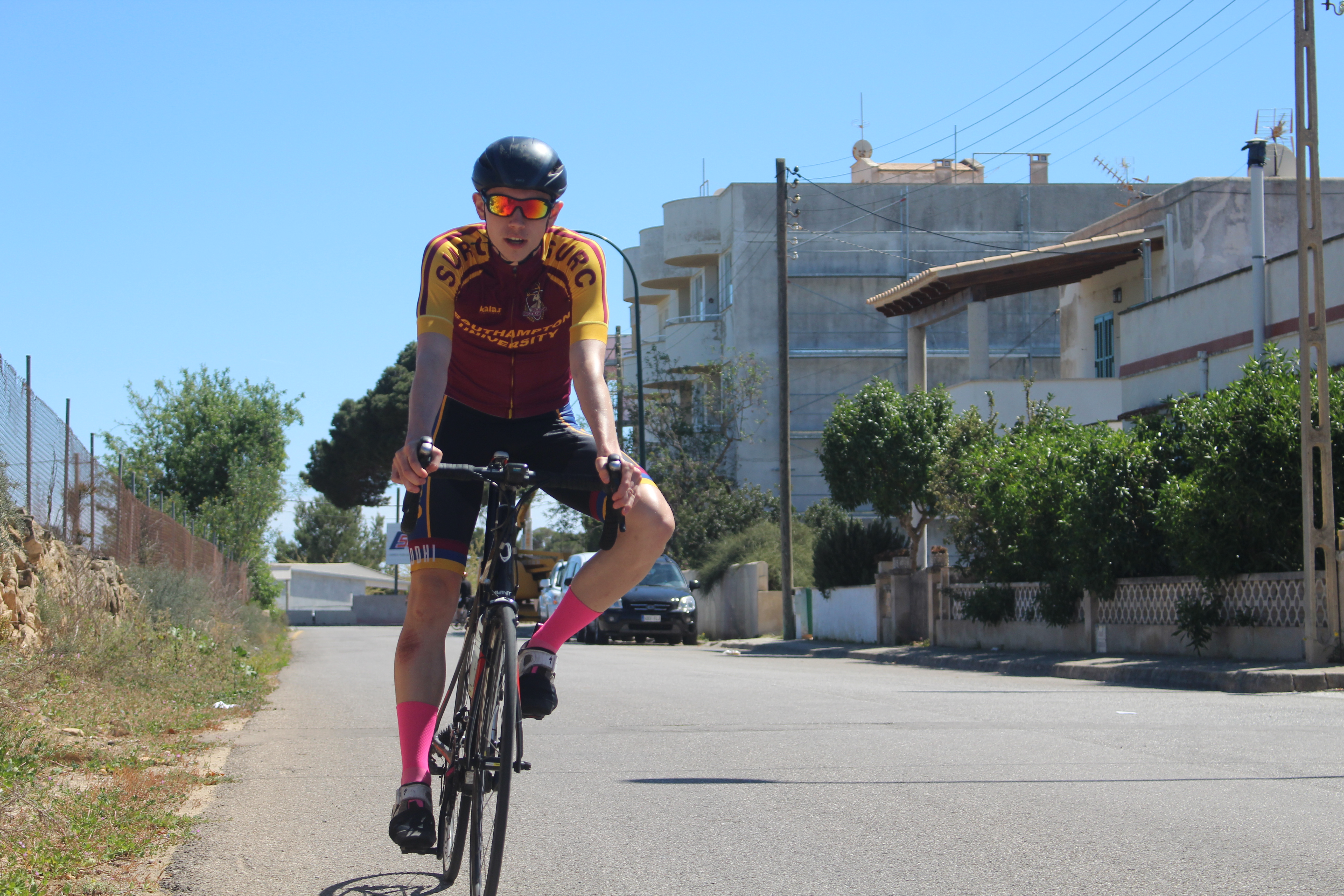
Tom Epton is a freelance writer and data scientist. Originally training as a scientist after completing his studies in physics he realised that cycling was what he wanted to spend his life thinking about. Now he works with manufacturers, athletes and teams using cutting edge data science methods to find performance gains. Tom writes primarily about sport-science and tech!
- Sonny EvansWriter
- Matt Ischt-BarnardEcomm and Tech Writer